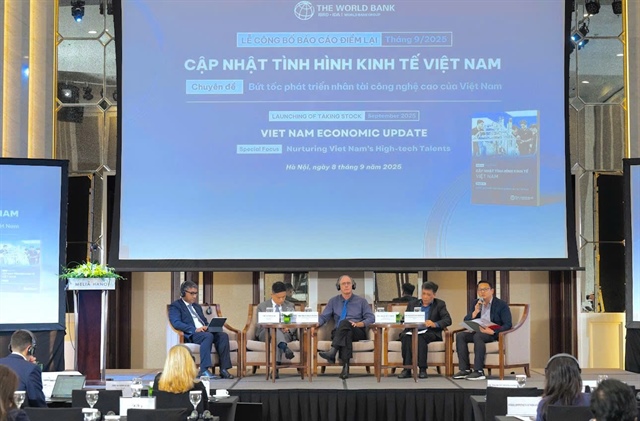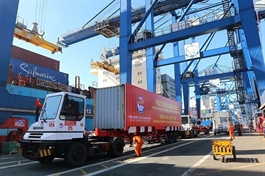World Bank forecasts Vietnam’s GDP growth to reach 6.6 per cent in 2025
World Bank forecasts Vietnam’s GDP growth to reach 6.6 per cent in 2025
Vietnam's GDP growth is forecast to reach 6.6 per cent in 2025, according to the latest report by the World Bank.
|
Vietnam's GDP growth climbed to 7.5 per cent on-year in the first half of 2025, up from 6.5 per cent in H1, 2024, boosted by the frontloading of exports amid trade policy uncertainties. This momentum was driven by a 14.2 per cent rise in exports over H1, 2025, including a 28.3 per cent surge in exports to the US ahead of potential tariff increases. Imports also accelerated to 16 per cent during H1 in response to an uptick in purchase orders during this period of frontloaded exports.
After strong growth momentum in H1, the Vietnamese economy is expected to cool for the remainder of the year as overall export growth normalises. The World Bank's baseline projection assumes reduced net export contribution to GDP growth. However, the outlook remains heavily dependent on further trade developments. GDP growth is projected to ease to 6.1 per cent in 2026 as the impact of slower global trade takes hold. It is then expected to rebound to 6.5 per cent in 2027, supported by a pickup in global trade and Vietnam's continued appeal as a competitive industrial base in global supply chains.
The report points out that global economic activity is projected to decelerate in 2025-26 to 2.3 per cent and 2.4 per cent, respectively, (-0.4 ppt and -0.3 ppt compared to January 2025 projections). This is linked to weak global trade growth and sustained geopolitical tensions. Growth in Vietnam's largest trading partners, the US and China, is expected to slow in H2 2025, further limiting external demand for Vietnam's products.
Elevated trade policy uncertainty is also expected to negatively weigh on investor and consumer confidence. Export-oriented economies, such as Vietnam, are particularly impacted by these developments.
According to the World Bank, policies to support growth and hedge against external uncertainty should focus on expanding public investments, mitigating financial sector risks, and structural reforms. Fiscal policy should continue to take the lead in supporting medium-term growth and resilience, given limited monetary policy space due to persistent interest rate differentials and exchange rate pressures. Vietnam's low public debt allows for increased investment, particularly to close infrastructure gaps in energy, logistics and transport, with an emphasis on efficient public investment management and prudent debt and risk oversight.
Strengthening financial sector stability remains vital. This can be achieved by requiring improved capital adequacy, enhancing prudential supervision, and stronger legal mandates for the State Bank of Vietnam, especially regarding group supervision and crisis management.
These also include accelerated structural reforms to improve backbone services, promote green growth, build human capital, and increasingly diversified trade to help mitigate global risks and foster resilient, long-term economic growth. Integrating domestic private firms more deeply into global supply chains and encouraging technological adoption will further support private sector development.
- 10:01 10/09/2025




























